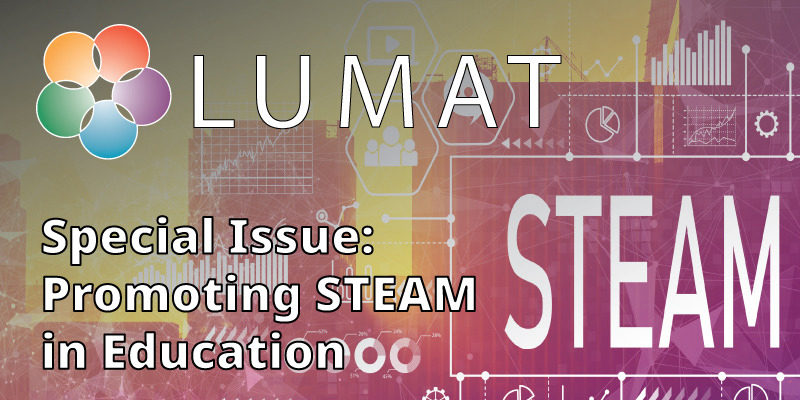The special issue “Promoting STEAM in education” has now been published in the LUMAT journal. STEAM (science, technology, engineering, art/aesthetics/architecture/all and mathematics) has been an increasingly popular approach in education. However, what it entails theoretically and practically, is still unclear.
To address the challenges of the 21st century skills, there is a need to educate citizens capable of seeing and exploring the interconnections within STEM subjects and between STEM and other areas. It is also important to educate teachers who can support students in becoming STEAM-literate citizens. We need to educate students who understand basic science and mathematics, and in addition to that, who are curious and knowledgeable about how things work (engineering), and how modern technology is affecting our life. In addition, it will be required from tomorrow’s leaders to be able to make connections between fields, such as between STEM and arts (STEAM), STEM and social sciences, STEM and policies.
The STEAM-special issue includes an editorial and three articles that challenge us to rethink STEAM education, reveal the potential of STEAM, and offer ideas for future research.
Articles offer insights on the practical applications of STEAM education
The editorial (Jaana Herranen, Erik Cyrus Fooladi, and Marina Milner-Bolotin) introduces some key notions, discourses, and challenges of STEAM education, as a relatively novel concept and briefly discusses the history of STEAM and its evolution over the last decades. It also problematizes STEAM and its roots through asking a question: What is “A” in STEAM representing?
The first article (Seamus Delaney and Daniel White), “Full STEAM ahead, but who has the map? – A PRISMA systematic review on the incorporation of interdisciplinary learning into schools”, reviews existing literature on interdisciplinary STEAM learning and teaching in high schools. The reviewed articles showed that improved learning outcomes, such as better results in academic tests, could be achieved in project- and problem-learning environments. In addition, the authors find that STEAM-based approaches in interdisciplinary teaching could potentially increase student collaboration and interaction with professionals.
The second article “Promoting STEAM learning in the early years: ‘Pequeños Científicos’ Program” (Valeria Cabello, Maria Loreto Martinez, Solange Armijo Solis, and Lesly Maldonado) describes and examines a non-formal education program among 3–10-year old children. The article discusses the strengths, weaknesses, and opportunities of the program based on the perceptions of the students, teachers, and educators. A number of strengths of the program were identified: the students were engaged in learning processes; holistic perspectives and integration between STEM and ‘A’ were achieved and clear signs were found of increased motivation and interest among the participants. One of the major challenges identified in this program was the handling of young learners’ emotions, frustration and behavior by an all-scientists/artist staff with limited or no pedagogical background in handling such issues.
The third article “Promoting student interest in science: The impact of a science theatre project” (Lydia Schulze Heuling) reports on a science theatre project in a heterogeneous teaching context in a disadvantaged area, and its effects on students’ interest in STEM and their artistic expression. The quantitative analysis presented in the study indicated an increased student interest in the topic of galvanization, and physics and chemistry in general. In addition, the approach resulted in increased student appreciation of artistic practices and positive classroom spirit, knowledge of cultural practices, and student self-confidence.


